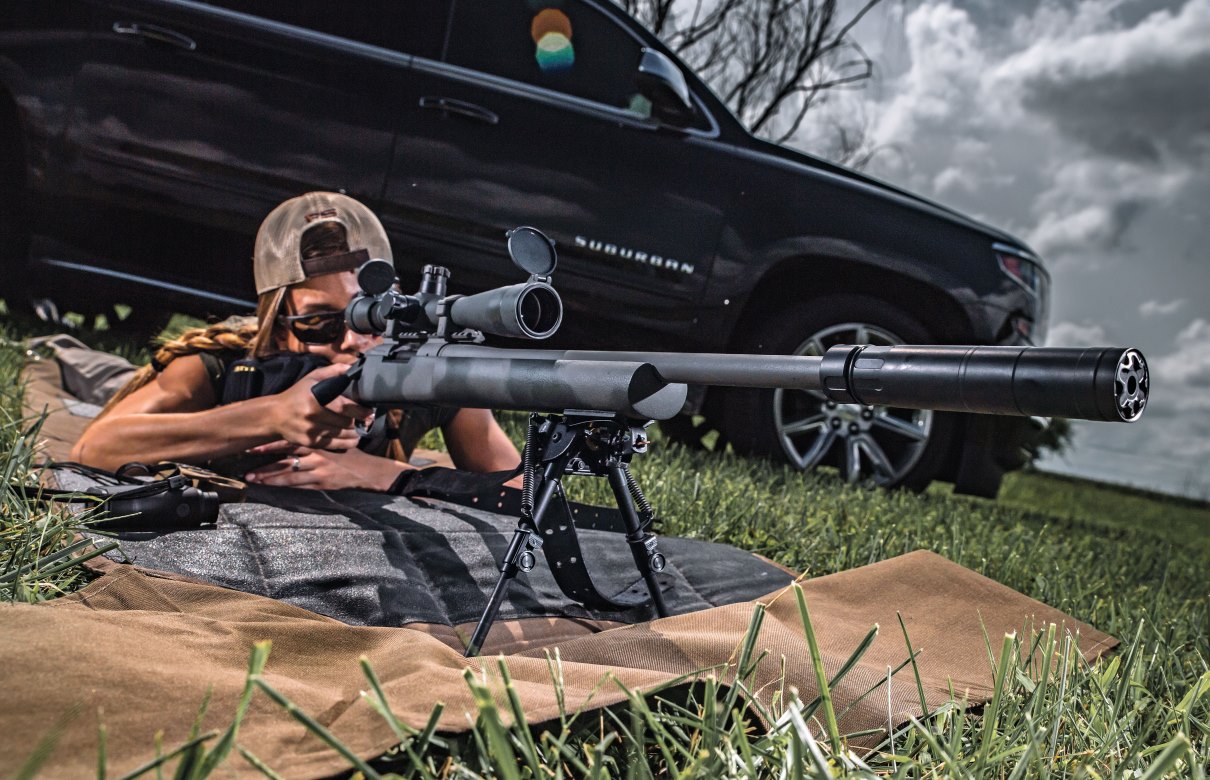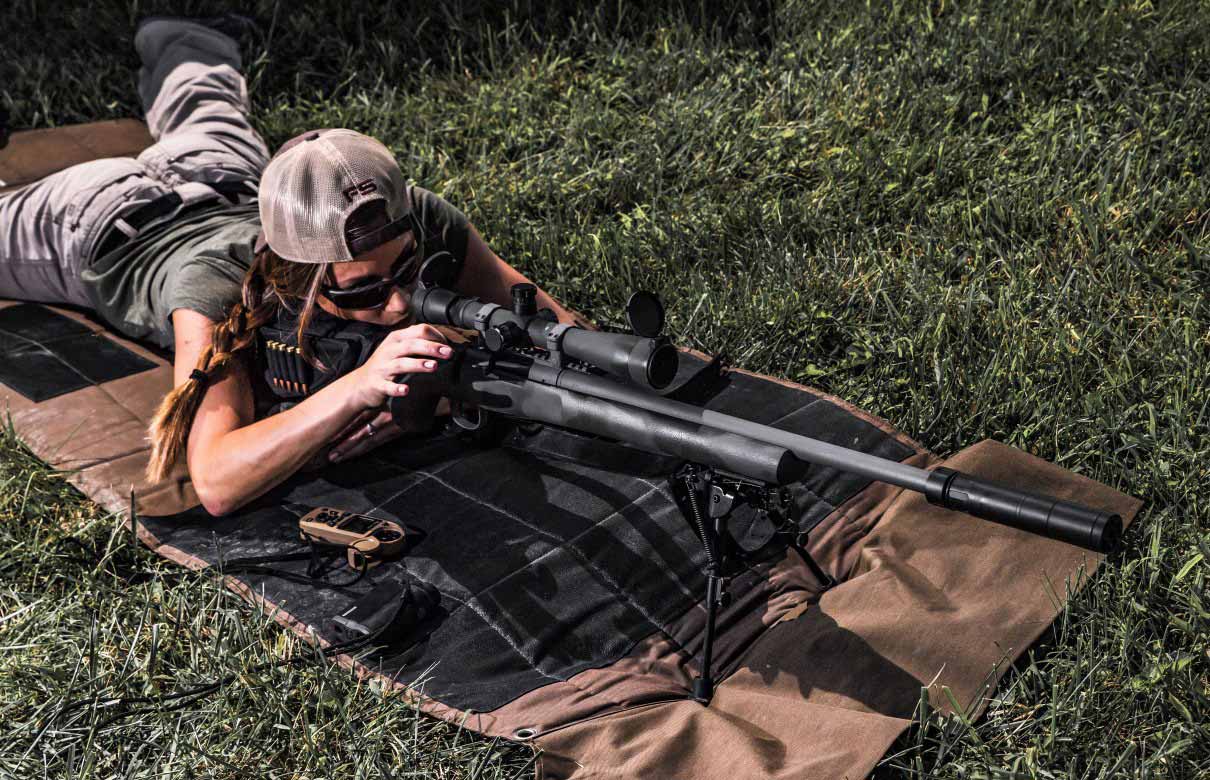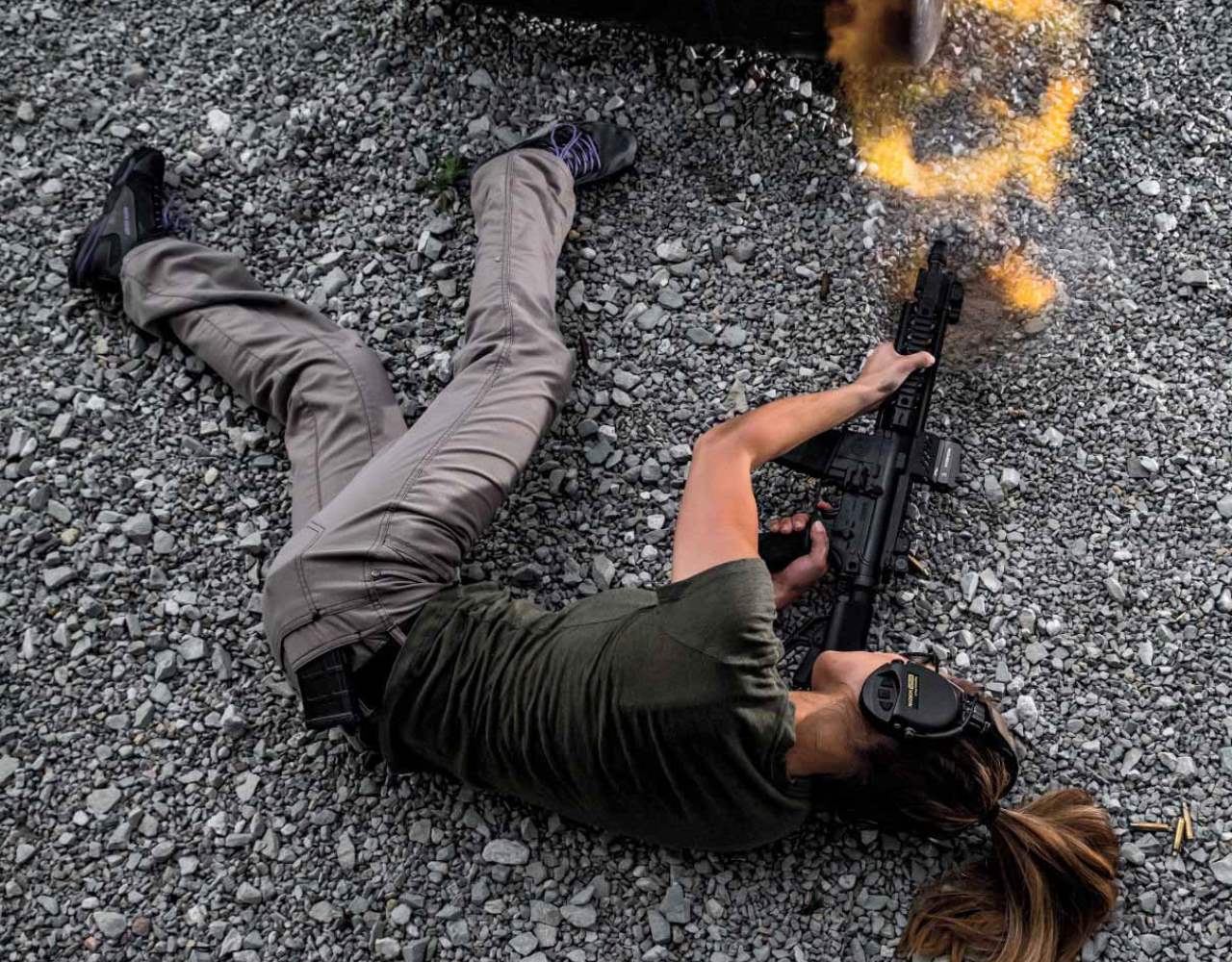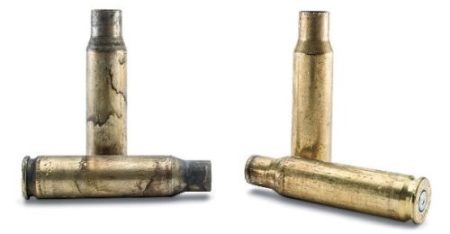No Experience Necessary
By: Kimberly Marie
 There are many benefits to shooting with suppressors, especially for new shooters. Suppressors encourage good shooting habits, protect your hearing and make your time at the range more enjoyable. (Sean Utley photo)
There are many benefits to shooting with suppressors, especially for new shooters. Suppressors encourage good shooting habits, protect your hearing and make your time at the range more enjoyable. (Sean Utley photo)
Why new shooters should be silent from the start
Suppressors can be intimidating to new shooters, but there are numerous benefits to shooting suppressed from the beginning of your firearms education. You experience less felt recoil, less noise and will have a more enjoyable shooting experience. Many people view suppressors as some - thing they have to work up to. I strongly encourage a change in that mindset.
The definition of a suppressor is a device that attaches to the barrel of a firearm and reduces the amount of noise generated while shooting. When you look at the way suppressors are engineered, they are basically a containment system that redirects discharged gases from the end of the barrel. Suppressors work similarly to car mufflers, and both were invented by Hiram Percy Maxim in the early 1900s. A suppressor gives the gases exiting the end of your barrel room to expand and cool, which is what makes the sound quieter. The larger the suppressor, the quieter the shot. When paired with subsonic am - munition, the noise is harmless to your hearing, even without ear protection. The reason? Subsonic ammo travels slower, has less gunpowder and has a heavier bullet — all factors that affect the sound output, especially when coupled with a suppressor.
Options
You have options when deciding which suppressor to use. For instance, they can be attached using direct thread or fast attach. Direct-thread options screw directly onto your barrel. A fast attach simply fits over the muzzlebrake and rotates into place. Also consider whether you want a multi-caliber suppressor or a suppressor that is caliber specific. A multi-caliber can will usually fit .30 caliber and under.
Suppressors are typically sold and advertised according to their weight and the decibels of sound the shooter will experience.

The POI will not always be the same on a previously zeroed rifle if it is used with (or without) its suppressor. (Sean Utley photo)
This information is important in suppressor selection, but a lightweight and quiet suppressor might also make your firearm shoot poorly. Obviously, this is something you’ll need to research prior to purchasing a suppressor for your firearm. Suppressors change the point of impact (POI) and accuracy (dispersion) of your firearm. The POI will not always be the same on a previously zeroed rifle if it is used with (or without) its suppressor. A rifle should be zeroed without the suppressor, then rechecked with the suppressor attached. During my testing of the B&T APC9, the attached Liberty Suppressors Centurion significantly shifted point of impact; the firearm consistently shot 6 inches higher using the suppressor. Group size was unaffected.
Accuracy is dependent on what type of suppressor you use with a particular firearm. A suppressor on one rifle may not affect the group size at all; however, it isn’t uncommon to experience dispersion. The best way to know how your firearm will shoot with a suppressor is to test it.
Benefits
The main benefit of shooting sup - pressed is reducing the sound of gunfire, sometimes down to hearing-safe levels. According to the National Institute for Occupational Safety and Health (NIOSH), any exposure to noise over 140 dB causes immediate and irreparable hearing loss. To put this into perspective, walking on a sidewalk with a car driving by is about 70 dB, standing on a platform with a passing train is roughly 100 dB and an air-raid siren at a distance of 50 feet is around 120 dB. Unsuppressed handguns and rifles create noise levels well above this threshold.
A suppressor also helps shooters who are affected by the noise of a gunshot. New shooters are not the only ones who experience issues with recoil anticipation, or flinching before your gun goes off. The low left shot, the slight tremors in the hand, the closing of your eyes prior to the gunshot — all of these issues cause the projectile to miss the intended target. The use of suppressors can dramatically improve shooting technique and help break these habits.

Shooting in the urban prone position is punishing with a muzzlebrake attached. Throw on a suppressor, and it’s no problem at all. (Sean Utley photo)
Suppressors are also useful for hunting, when it’s not practical to wear earplugs or muffs all day. Suppressors are currently legal to use and own in 42 states and are legal for hunting in 40 of these states. Suppressed hunting reduces the likelihood of stirring up your intended target, as well as other game in the area. Suppression makes it difficult for game to know where the shots are coming from. Also, because listening to your surroundings is an important strategy for tracking, many hunters rarely (if ever) use hearing protection. Unsuppressed gunfire is loud enough to cause permanent hearing loss. If you hunt with a dog, your dog’s hearing is even more sensitive. Using a suppressor will lower the noise level enough to protect your hearing so that you can hunt without earplugs. Not only that, suppressors reduce felt recoil and muzzle rise, so follow-up shots should be quicker.
 No part, from the spent cases to the bolt carrier group, escapes the fouling
No part, from the spent cases to the bolt carrier group, escapes the fouling
of suppressed shooting. Routine maintenance is a must. (Sean Utley photo)Shooting rifles equipped with muzzlebrakes is popular, but has disadvantages. During a recent training session with an unsuppressed SIG Sauer 516 SBR (with a muzzlebrake), I found it difficult to stand next to a friend who was operating the gun because of the massive concussive effects. Later when I was shooting in urban prone, the combustion literally threw gravel and left a hole in the earth. It kicked up dust and was disorienting. No question, I was anticipating each shot as I braced for the blast. With the SIG Sauer SRD556 suppressor attached, there was no drama from the gravel below, and I was able to better focus on my shooting fundamentals. I could also stop doubling up on hearing protection.
Disadvantages
Using a suppressor has challenges as well. The greatest of these is dirtiness. When shooting suppressed on a semiautomatic, you will experience an increase in back pressure, which is when gas comes back through the muzzle and gas system. The amount will vary with the firearm and the suppressor. I’ve had instances when the gases stung my eyes following every shot. And when I released the magazine, the unfired rounds were extremely dirty. These gases find their way into everything. You can overcome this issue with products like an adjustable gas block. These are specifically designed for suppressor use to limit the amount of gas allowed through the port. Some firearms come with one and some require installation. Firearms will cycle harder and shoot harder with a suppressor due to back pressure, and an adjustable gas block can help negate these effects.
Another product to consider is an adjustable bolt carrier group.
Shooting with suppressors is a pleasant experience, especially for new shooters. You don’t need an extensive shooting background to use one; you simply need to follow the proper steps. Suppressors can encourage good shooting habits, save you from irreparable hearing damage and bring more enjoyment to your time at the range.